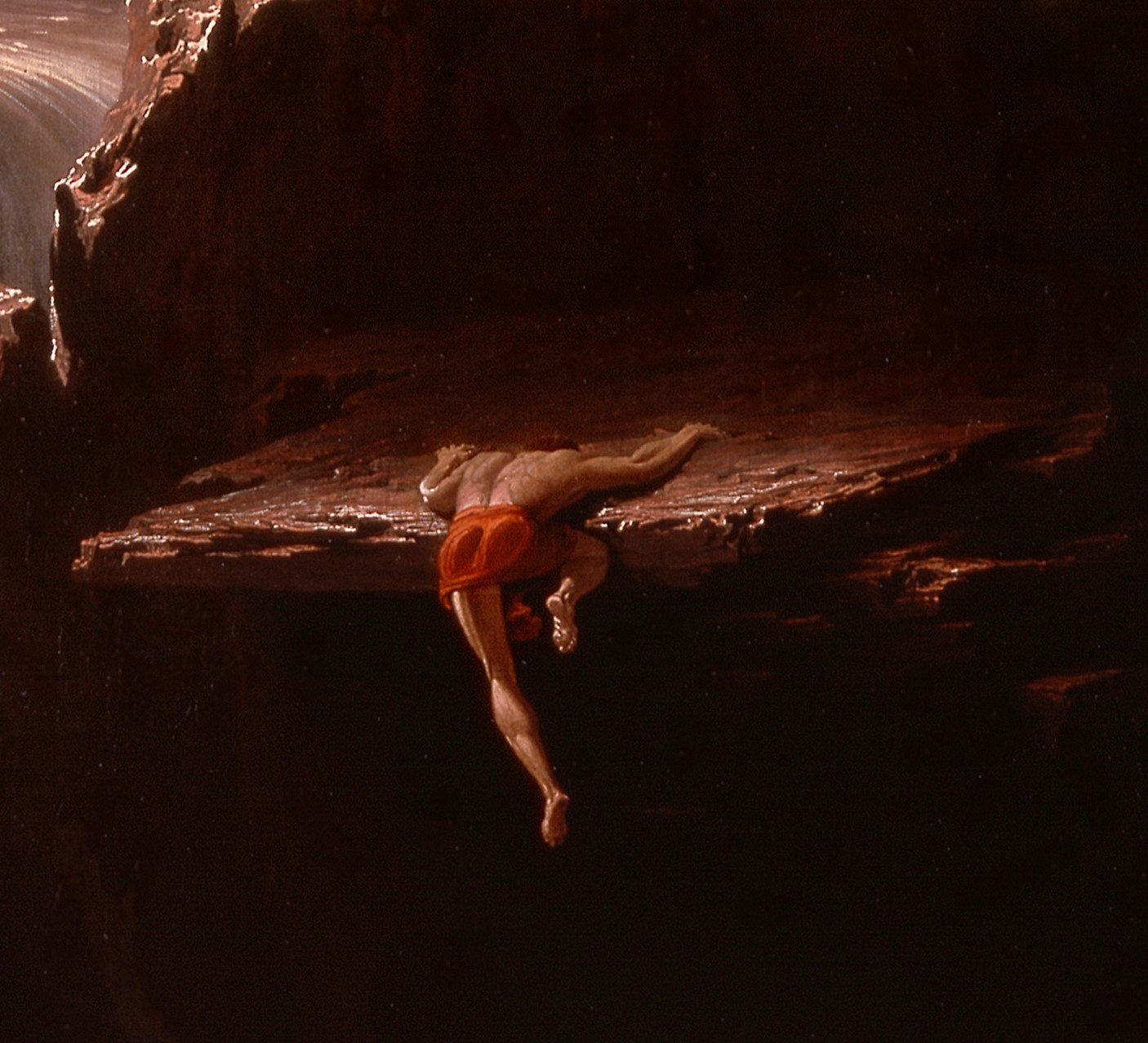John Martin’s “Sadak in Search of the Waters of Oblivion” is a profound example of Romantic art, embodying themes of struggle, perseverance, and redemption through its rich symbolic elements. This 1812 painting, steeped in dramatic intensity and intricate detail, tells the story of Sadak, a man on a harrowing quest to find the mythical waters of oblivion. Through Martin’s masterful use of light, color, and composition, the painting becomes a powerful narrative of human endurance and spiritual journey.
The Desolate Landscape
The vast, desolate landscape in “Sadak in Search of the Waters of Oblivion” serves as a symbolic representation of the arduous journey that Sadak must undertake. The rocky, barren terrain, with its towering cliffs and treacherous paths, mirrors the inner turmoil and relentless challenges faced by Sadak. This harsh environment symbolizes the obstacles and trials that one must overcome in the pursuit of redemption and self-discovery. The sheer scale of the landscape, dwarfing Sadak, emphasizes the insignificance and vulnerability of man in the face of nature’s overwhelming power, highlighting the theme of struggle.
The Waters of Oblivion
The waters that Sadak seeks are not just a physical goal but a symbol of spiritual cleansing and redemption. In many mythologies and religious narratives, water is a purifying element, capable of washing away sins and granting a new beginning. For Sadak, the waters of oblivion represent the hope of erasing past transgressions and attaining peace. This quest for the waters is a metaphor for the human desire to find forgiveness and renewal, a central theme in the painting that resonates deeply with the viewer.
The Lone Figure of Sadak
Sadak’s solitary figure, depicted with a mix of determination and despair, embodies the human spirit’s resilience and the struggle against insurmountable odds. His posture and expression convey a sense of relentless pursuit, despite the overwhelming obstacles. This depiction serves as a powerful reminder of the perseverance required to overcome life’s challenges. Sadak’s journey is not just a physical one but also an emotional and spiritual quest, symbolizing the internal battles we face in our quest for meaning and redemption.
Light and Darkness
Martin’s use of light and darkness in the painting further enhances its symbolic depth. The dramatic lighting, with stark contrasts between light and shadow, creates a sense of foreboding and highlights the perilous nature of Sadak’s journey. The light, often seen illuminating the distant horizon or the waters Sadak seeks, symbolizes hope and divine guidance. It represents the idea that even in the darkest of times, there is a glimmer of hope that guides us towards our goal. This interplay of light and darkness underscores the themes of struggle and redemption, illustrating the duality of despair and hope.
The Symbolic Use of Color
Color plays a crucial role in conveying the painting’s themes. The muted, earthy tones of the landscape reflect the harshness and barrenness of Sadak’s journey, while the vibrant hues of the water and the sky signify the promise of redemption and peace. The contrast between these color palettes accentuates the dichotomy of Sadak’s experience, emphasizing the emotional and spiritual turmoil he endures. The use of color as a symbolic tool enhances the viewer’s emotional connection to Sadak’s plight and his quest for redemption.
The Narrative of Redemption
At its core, “Sadak in Search of the Waters of Oblivion” is a narrative of redemption. Sadak’s journey symbolizes the human condition, fraught with struggles and the pursuit of forgiveness and renewal. The painting’s symbolic elements—the desolate landscape, the waters of oblivion, the lone figure of Sadak, and the interplay of light and color—come together to create a profound meditation on the themes of struggle, perseverance, and redemption. Martin’s work invites the viewer to reflect on their own life journey, encouraging a deeper understanding of the resilience and strength required to overcome adversity and achieve inner peace.
Conclusion
John Martin’s “Sadak in Search of the Waters of Oblivion” is more than just a visual masterpiece; it is a rich tapestry of symbolic elements that explore profound themes of human existence. Through its dramatic landscape, symbolic use of light and color, and the poignant depiction of Sadak’s solitary quest, the painting offers a timeless reflection on the themes of struggle, perseverance, and redemption. By delving into the symbolism within the Sadak in Search of the Waters of Oblivion artwork, we gain insight into the universal human experience and the enduring quest for meaning and redemption.



